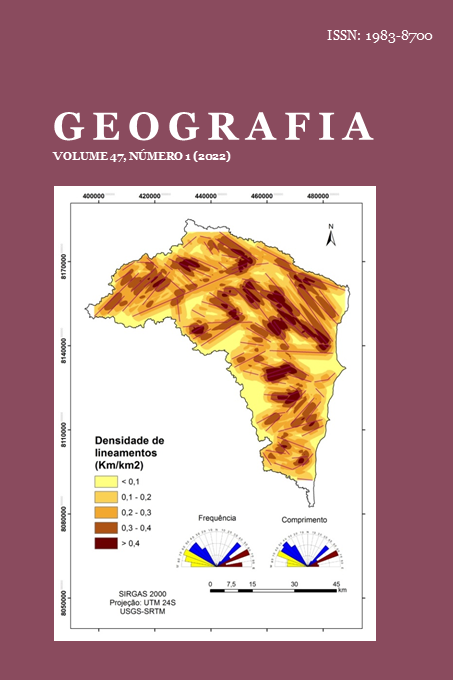CLUSTER ANALYSIS APPLIED TO CO2 EMISSIONS IN BRAZIL
DOI:
https://doi.org/10.5016/geografia.v47i1.16714Abstract
The article uses descriptive and exploratory statistical analysis to interpret the behavior of greenhouse gas emissions in Brazil through a time series from 1990 to 2019. The Cluster analysis technique was the descriptive statistical tool used for the analysis of emissions data, also using quantitative data and qualitative information on the country's federative units, economic, statistical, and natural data related to emissions of greenhouse gases. It demonstrates and describes the differences between the federative units, sectors, actions, and economic activities that most influence emissions. Thus, the article offers elements for understanding the issue and the growth of greenhouse gas emissions in the country, to contribute with governments and society to the maintenance and development of control and action plans and programs to reduce emissions, and consequently compliance with the Brazilian NDC and the PNMC.
Downloads
Published
Issue
Section
License
The authors maintain the copyright and grant GEOGRAFIA the right of first publication, with the articles simultaneously licensed under the Creative Commons BY 4.0 License, which allows sharing and adapting the articles for any purpose, as long as appropriate credits and provisions of image rights, privacy or moral rights. Other legal attributions can be accessed at: https://creativecommons.org/licenses/by/4.0/legalcode.en.
Geography, Rio Claro, SP, Brazil - eISSN 1983-8700 is licensed under the Creative Commons BY 4.0 License.





